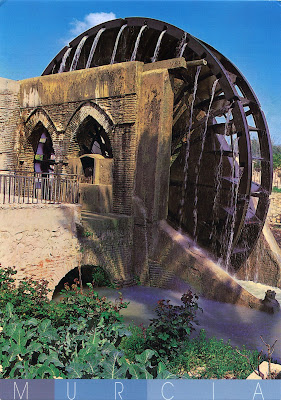This postcard make me some problems of identification, especially because the publisher not thought it necessary to write something else on the back but what is written on the front, namely "Suomi - Finland - Helsinki". I noticed the same thing on the first postcard received by me from Finland, but it seemed me natural that there weren’t other details, because it’s a country's map. Isn’t valid on this case. Of course I immediately recognized the tall green dome surrounded by four smaller domes of the cathedral (Evangelical Lutheran) probably the most important symbol of the city, but the bottom of the building didn’t fit at all. At first I thought that the front building is the University: as well six columns at the entrance, as well three levels, but the form of columns and of first floor windows is quite different. Finally I identified it as Helsinki City Hall (
Helsingin kaupungintalo), so the photo was made from the quay.
Built between 1830 and 1852 in neoclassical style, as a tribute to the Grand Duke, Nicholas I, the Tsar of Russia, the church was called, until the independence of Finland in 1917, St. Nicholas' Church.
Helsingin tuomiokirkko (Helsinki Cathedral) or
Suurkirkko (The Big Church) is visited annually by 350,000 people and is one of the tourist attractions of
Stade (the nickname of Helsinki, from the Swedish word
stad, meaning
city).
Sadly or Finnish or the Romanian postal officials or even pilot of the aircraft that transported the mail (friends know why I say this) have bent one of the corners of the postcards, halved me, of course, the joy.
The stamp belong to the
100th anniversary of Finnish comics set, a second class serie of six stamps, issued on 5 septembrie 2011. The first Finnish comic book was published in November 1911 and it was
Professori Itikaisen tutkimusretki (The Expedition of Professor Itikainen) written and drawn by Ilmari Vainio.
The pictorial motifs include popular characters from the first six decades of Finnish comics from the 1910s to the 1960s and the selected images represent the most distinctive features of each character. The 1910s (which is present in my postcard) are represented by Ola Fogelberg’s Janne Ankkanen which was published in
Suomen Kuvalehti and later in
Kansan Kuvalehti. Hjalmar Löfving’s Olli Pirteä, which was published in
Sirkka, represents the 1920s. The 1930s return with Herra Kerhonen, whose author, Gösta Thilén, is regarded as one of the masters of wordless comics. The 1940s are represented by Antti Puuhaara, which was published in
Yhteishyvä as drawn by Aarne Nopsanen and written by Raul Roine. For the 1950s, the stamp sheet features
Kili ja Possu, written by Olavi Vikainen, who specialized in animal characters in children's comics that were published in a number of Finnish and Swedish papers. The stamp for the 1960s depicts Unto Uneksija, which was published in
Pellervo. Veikko Savolainen, its creator, is better known as Joonas thanks to one of his later works.
The designer Ville Tietäväinen is a cartoon artist himself. As a particularity, the stamps shape isn’t regular, sometimes following the outline of drawing. The series is very interesting and I would like to receive and the others stamps on the future Finnish postcards.
To complete the amount necessary for the shipment, the sender (Juha - many thanks, man!) has added to the stamp two cross-shaped self-adhesives issued in 2008, with values of 0.10 € and respectively 0.05 €. In terms of themes, the first depicting the Finnish Archipelago, but about the second I couldn’t find any information.
sender: Juha / tuoju (
postcrossing)
sent from Helsinki (Finland), on 17.10.2011
photo: Seppo J.J. Sirkka


































